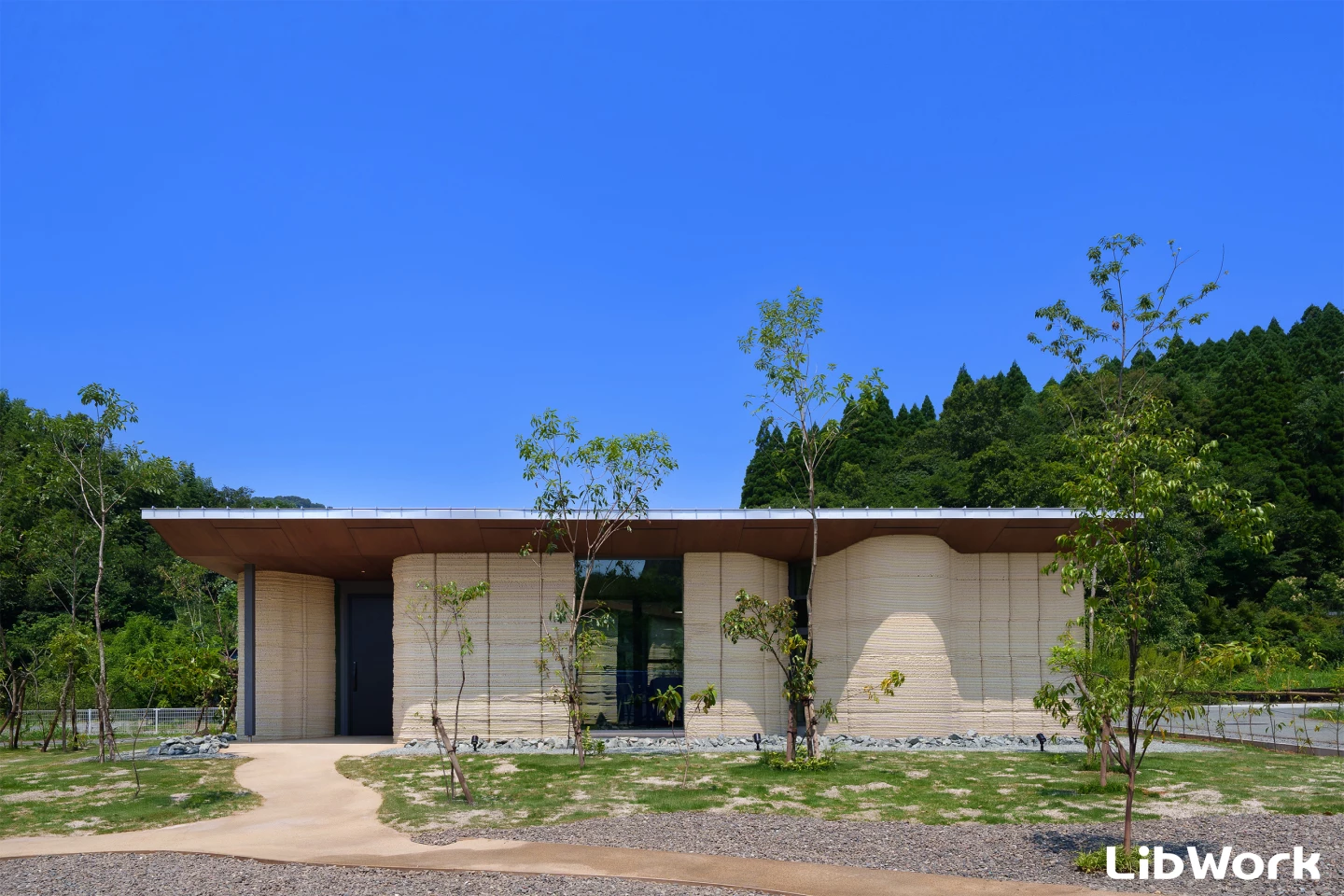A Japanese company has completed construction of a 3D-printed house using soil-based materials instead of traditional concrete. The Lib Earth House Model B, located in Yamaga, Kumamoto Prefecture, measures 100 square meters (1,076 square feet) and was developed through a collaboration between Lib Work Co., Arup, and WASP.

The structure uses a mixture of earth, lime, and natural fibers as primary building materials. “It does not rely on cement, but instead uses earth, lime, and natural fibers as its main raw materials,” explains Lib Work. “All of these materials are abundant on Earth, renewable, and have a low environmental impact.” The company states that the building can be dismantled at the end of its lifecycle, with much of the structure returning to soil.
Construction involved a WASP-supplied 3D printer that extruded the soil mixture in layers to create the home’s shell. Human builders then added windows, doors, roofing, and interior elements to complete the structure. The finished home features ribbed walls characteristic of 3D-printed construction and includes modern amenities with spacious, well-lit rooms.
The house operates off-grid using Tesla Powerwall battery storage and solar panels. Smart home features allow smartphone control of air conditioning, lighting, and bath systems. Integrated sensors will monitor the structure’s performance, including condensation, insulation, and long-term durability.
Lib Work plans to begin pre-orders in August and aims to deliver 10,000 units by 2040. The company hopes to eventually automate the entire construction process beyond just the shell printing. Currently available only in Japan, the company intends to expand internationally, though pricing details have not been announced.
Source: newatlas.com

